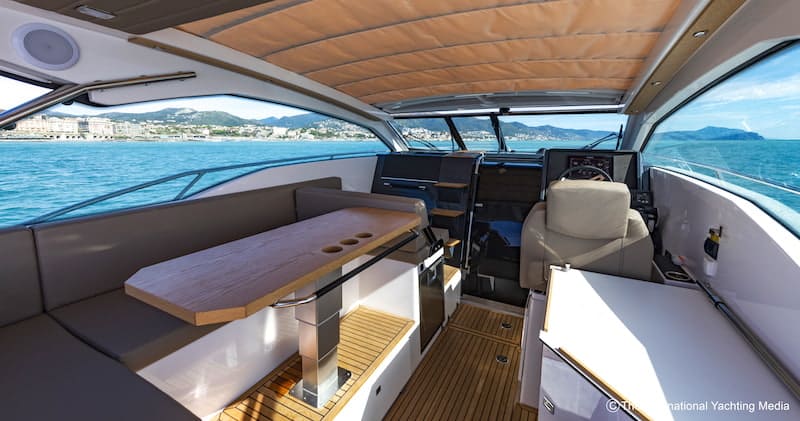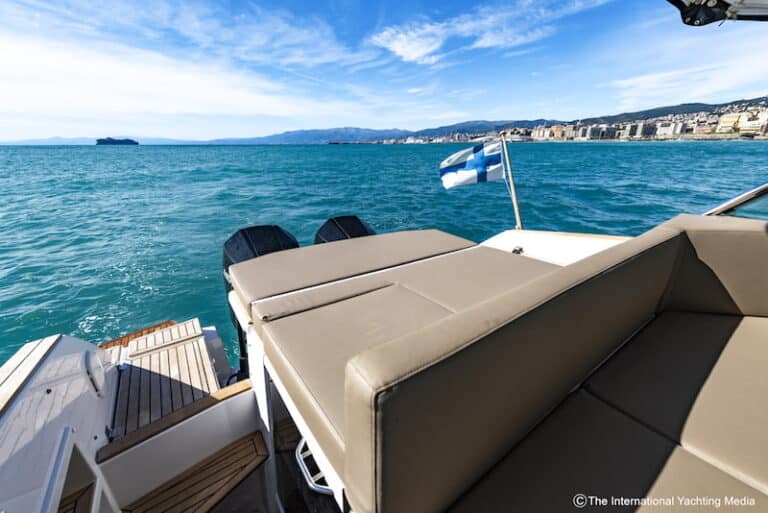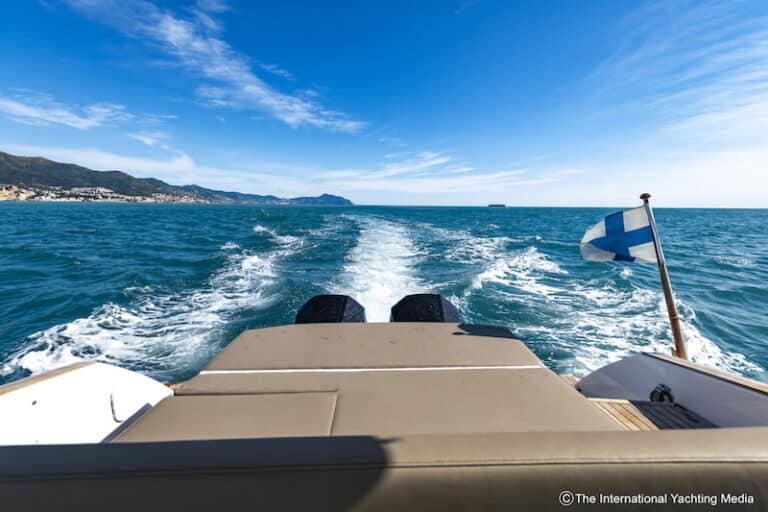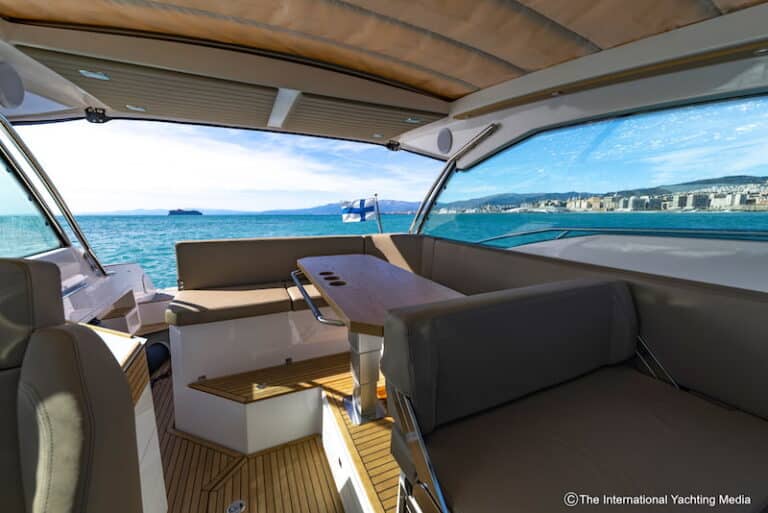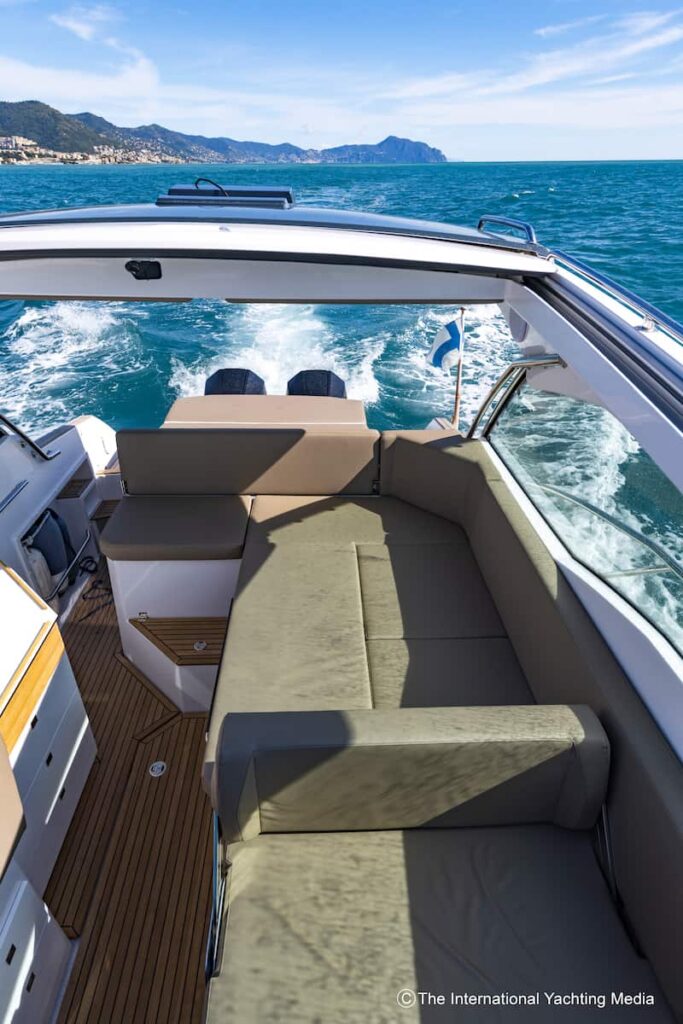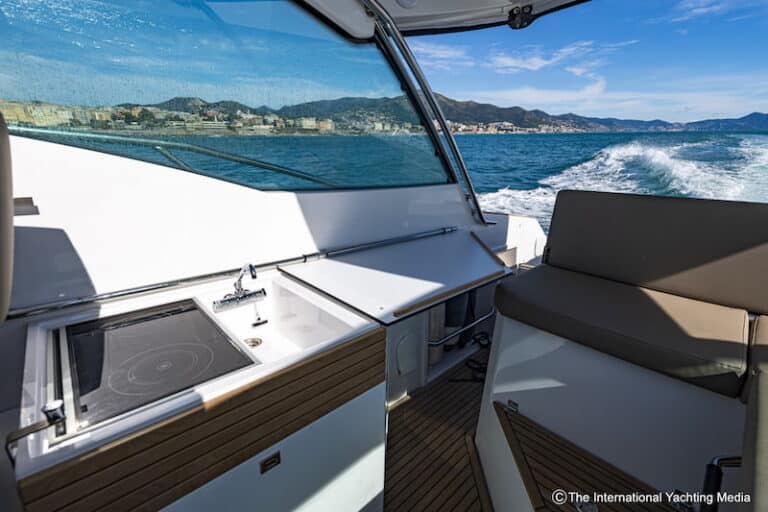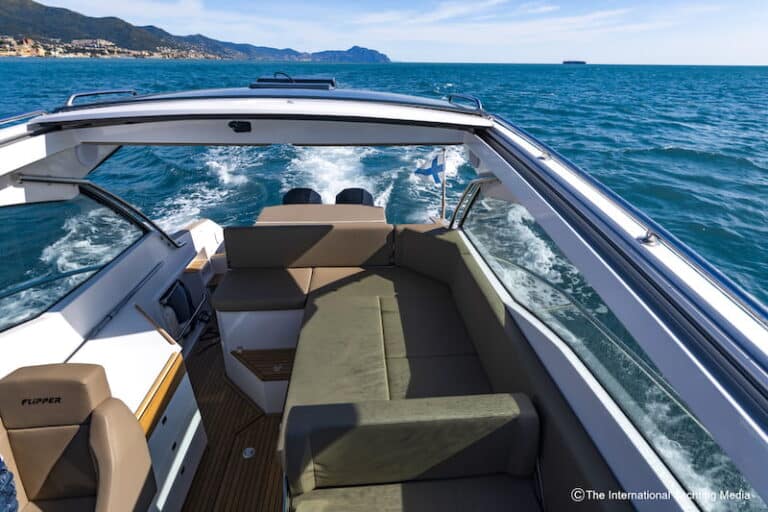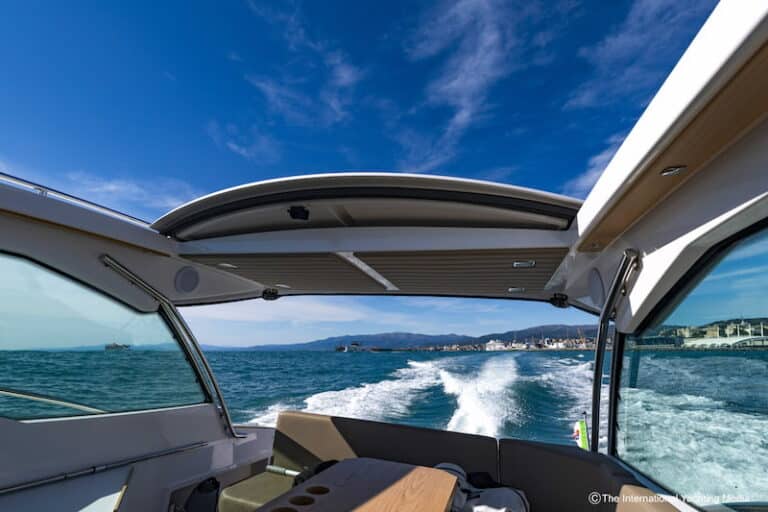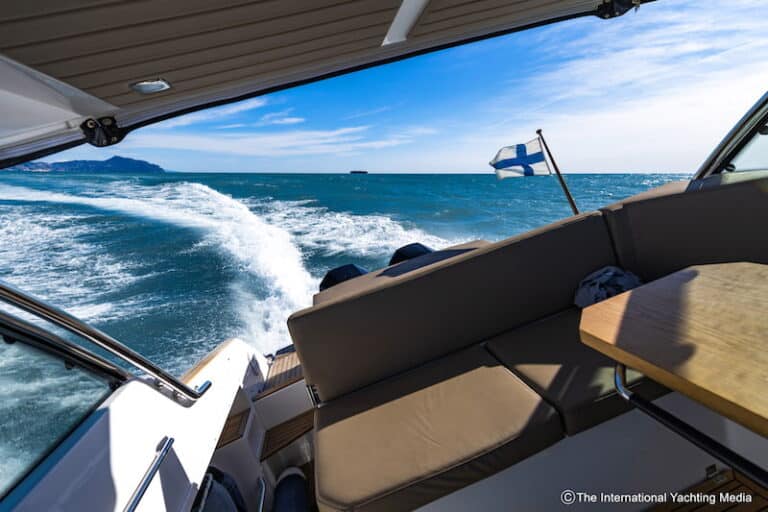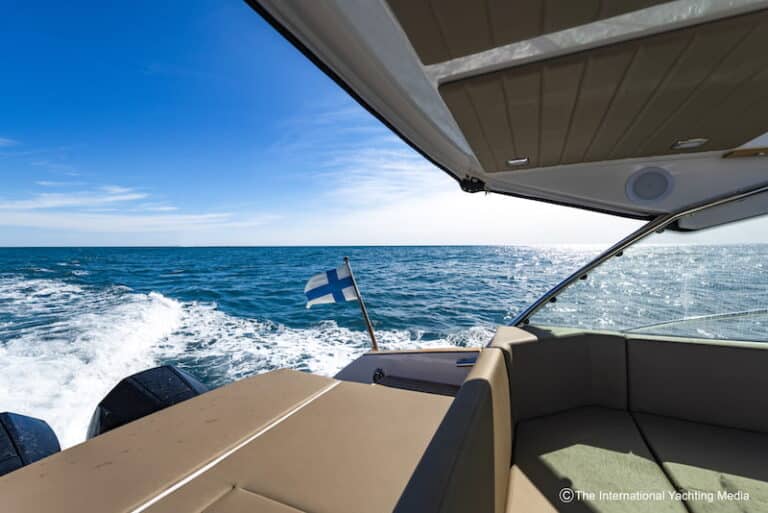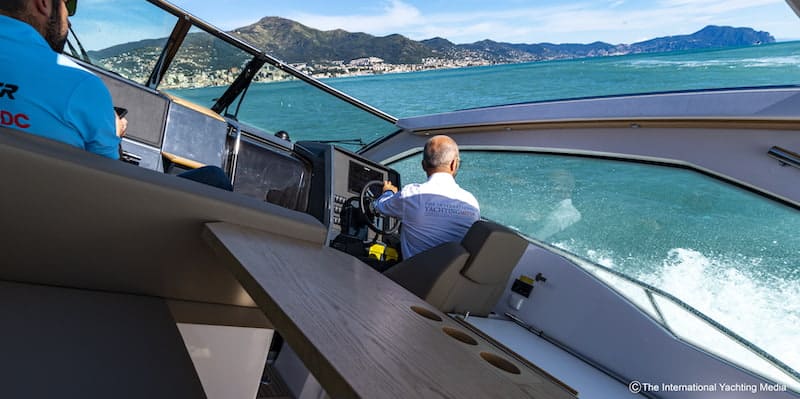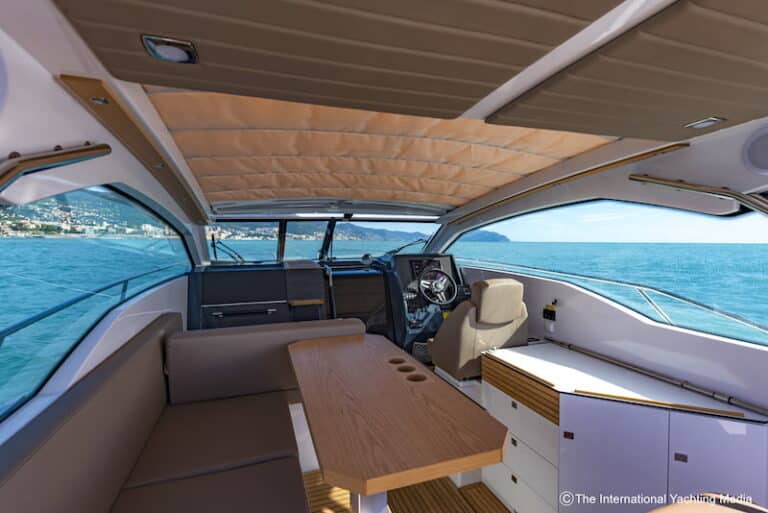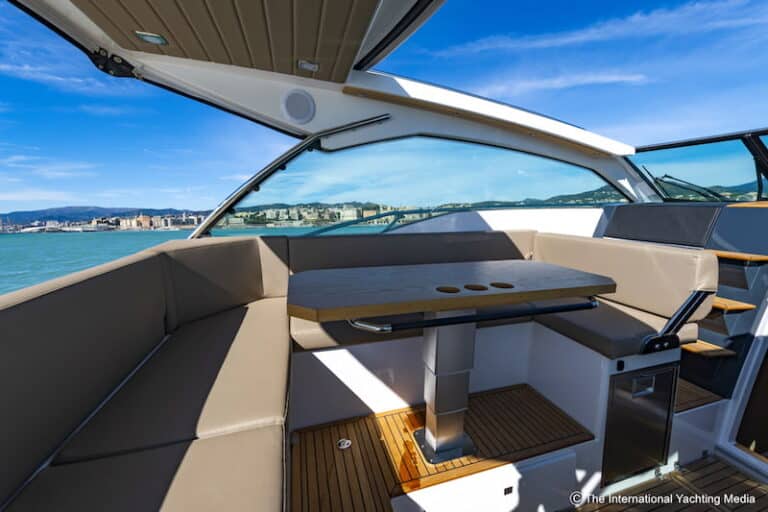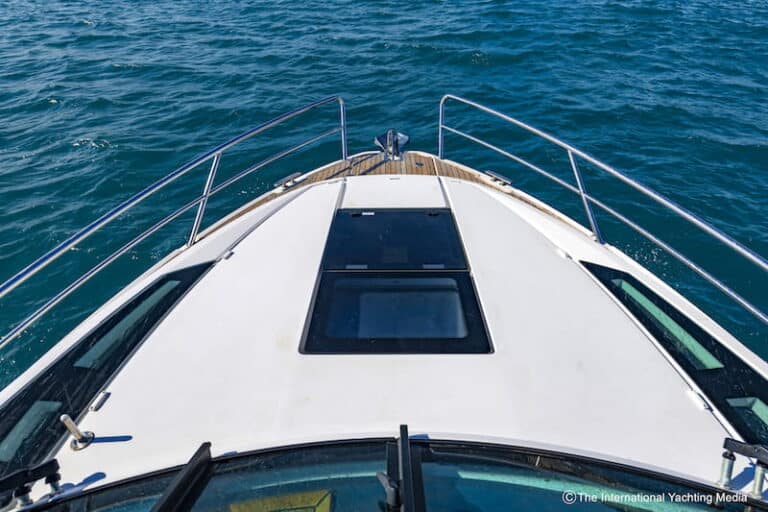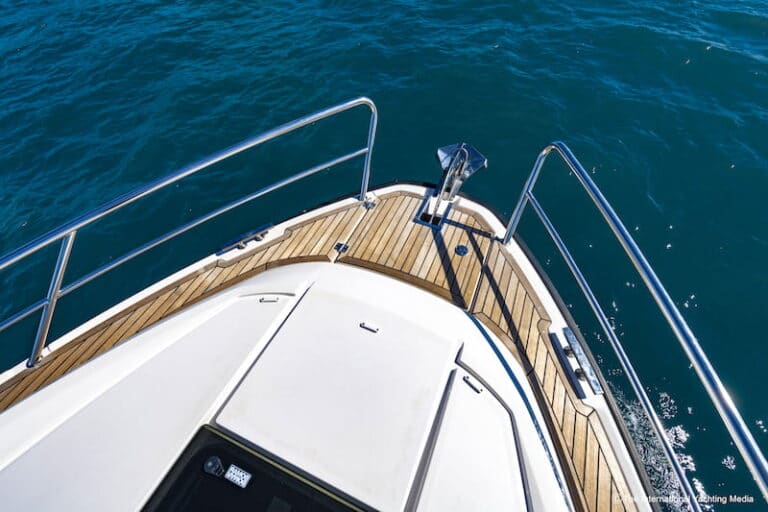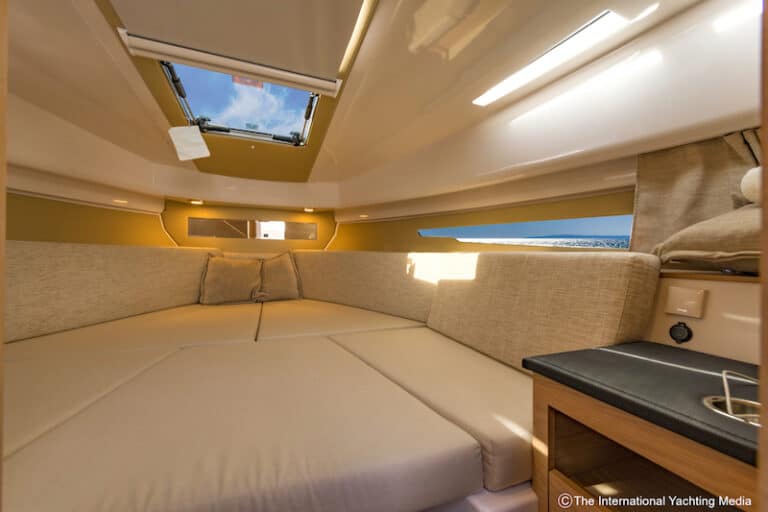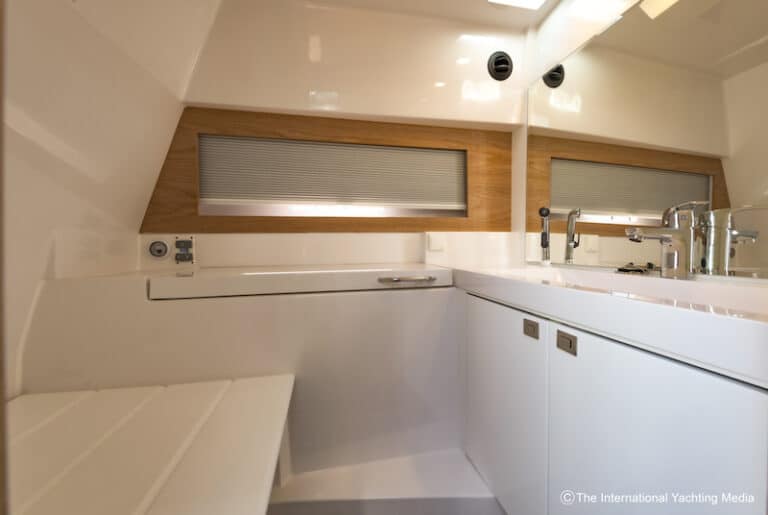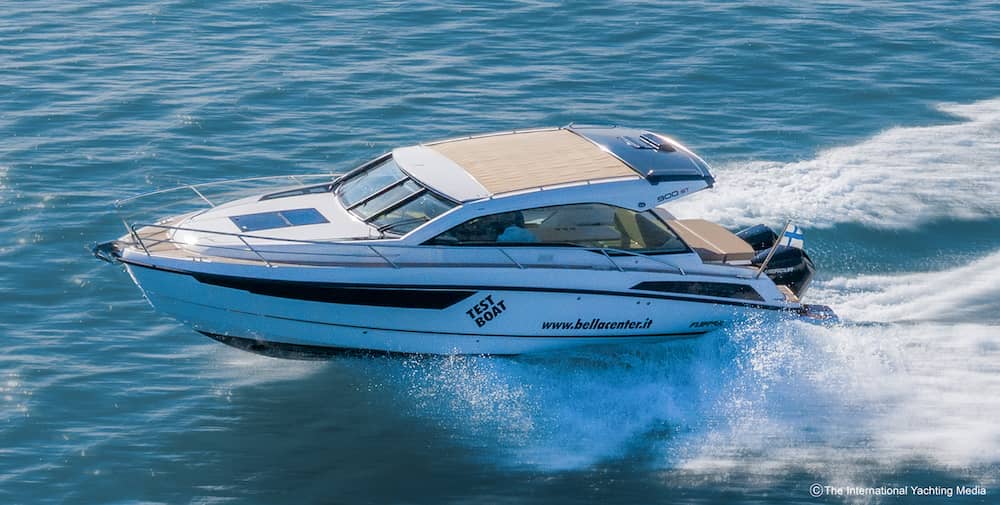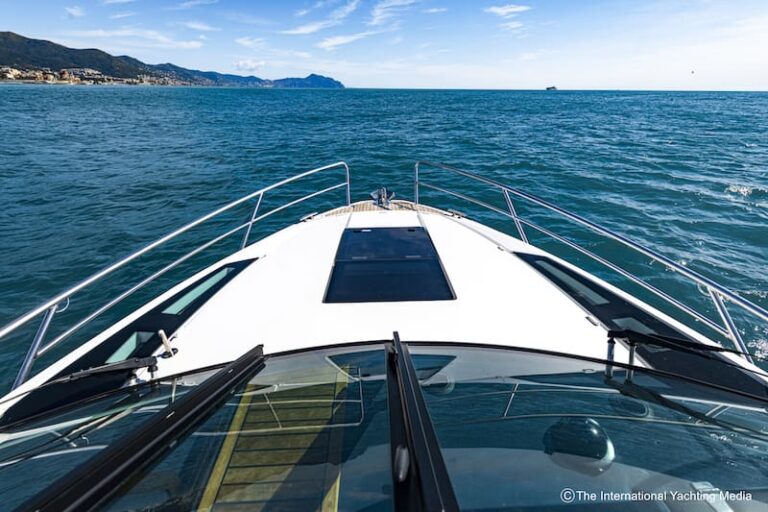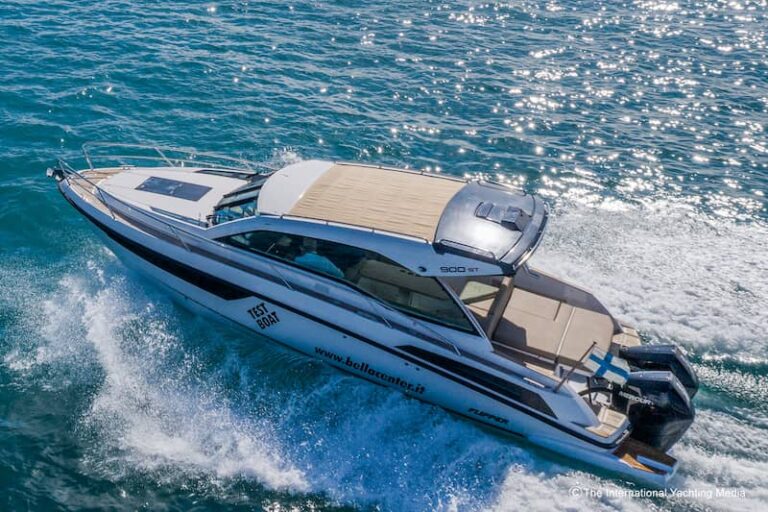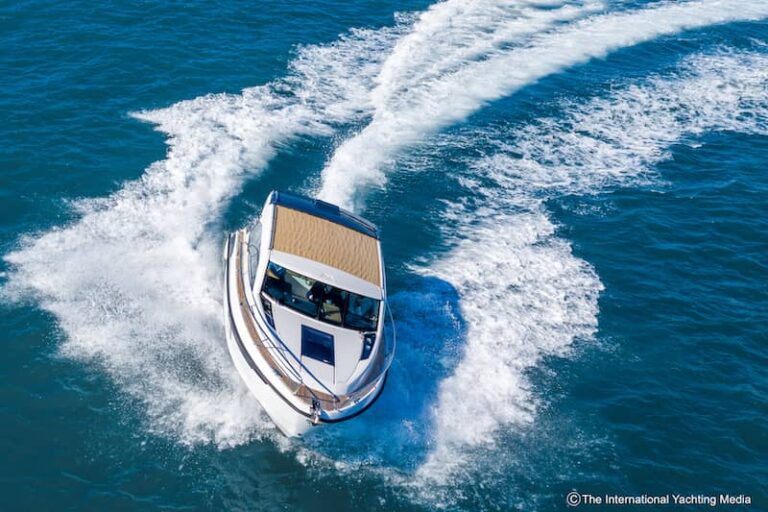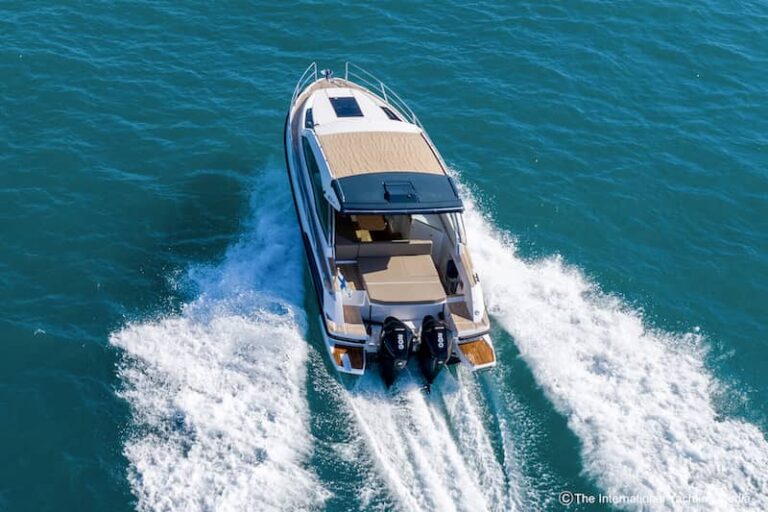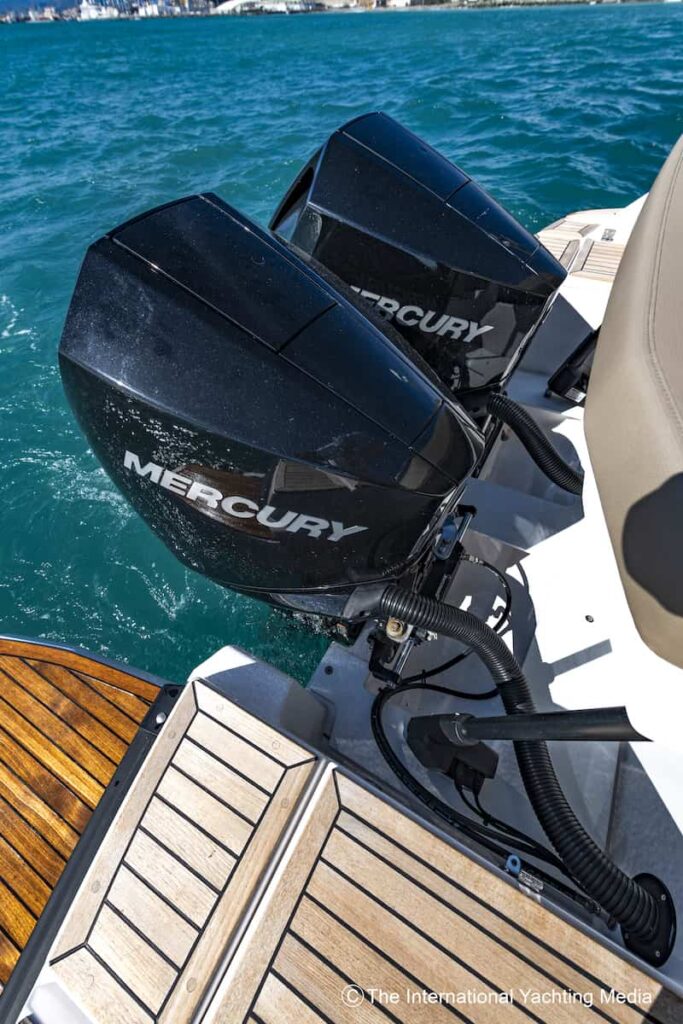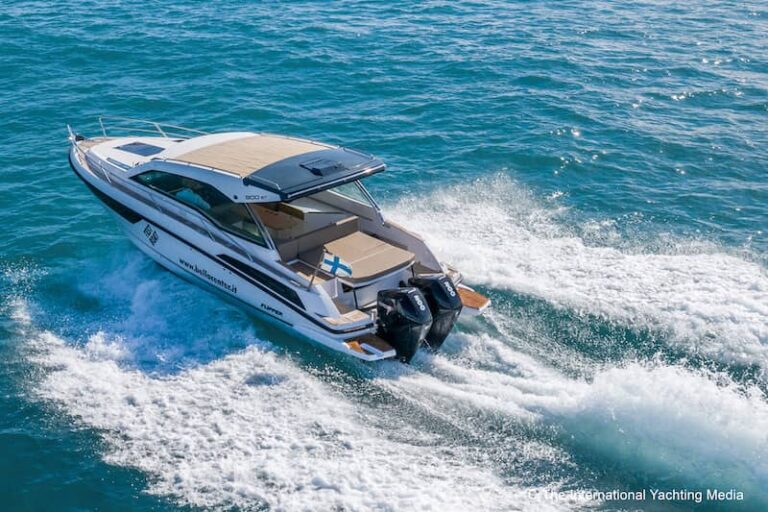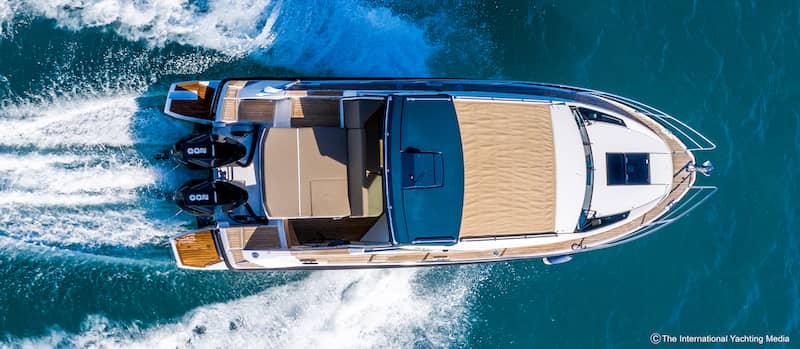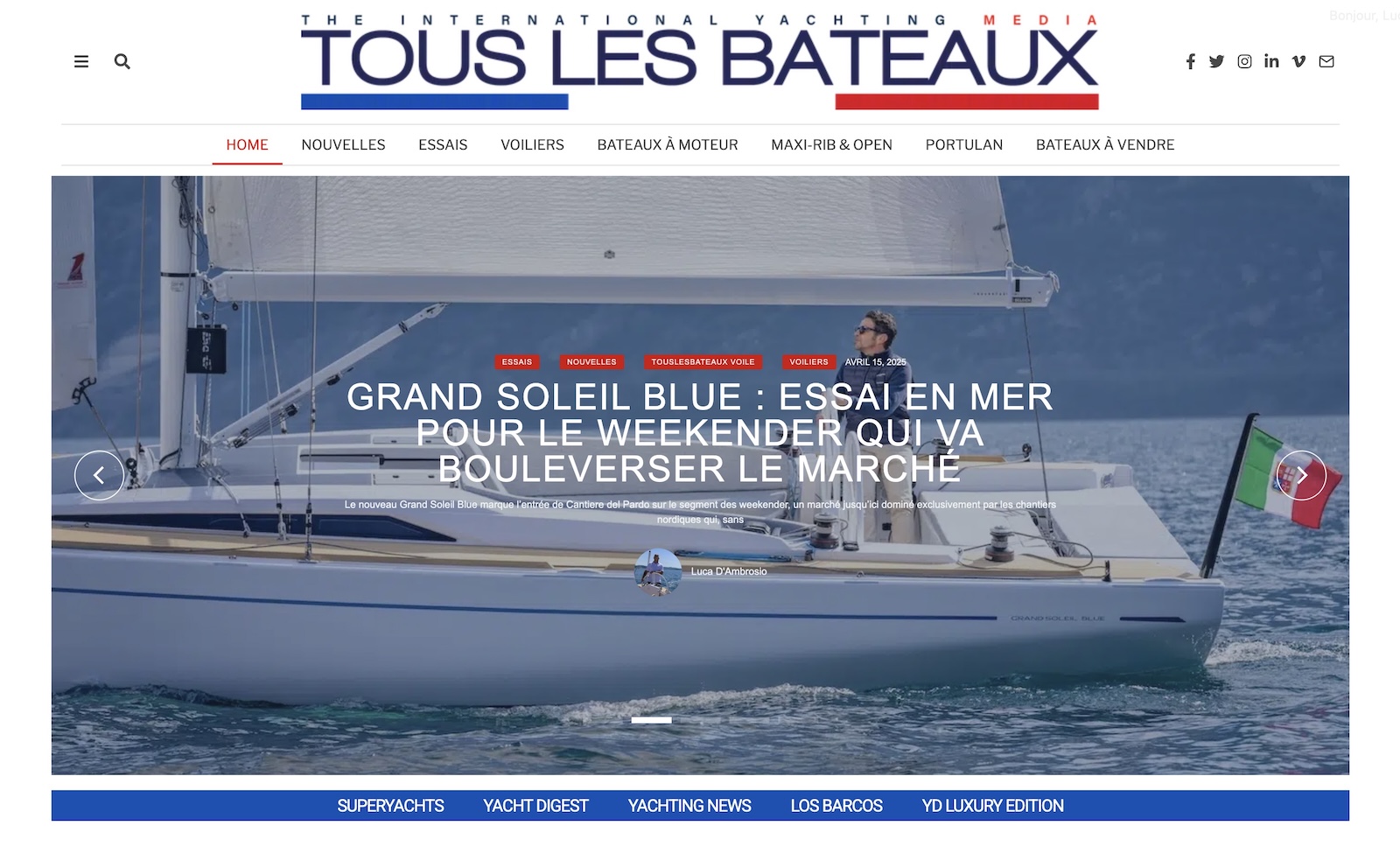Agile, fast, spacious and well-refined, the Flipper 900 ST, successor of the 900 DC, is an excellent example of how a good project can be carried out in the best way without skimping on quality and substance.
Getting started
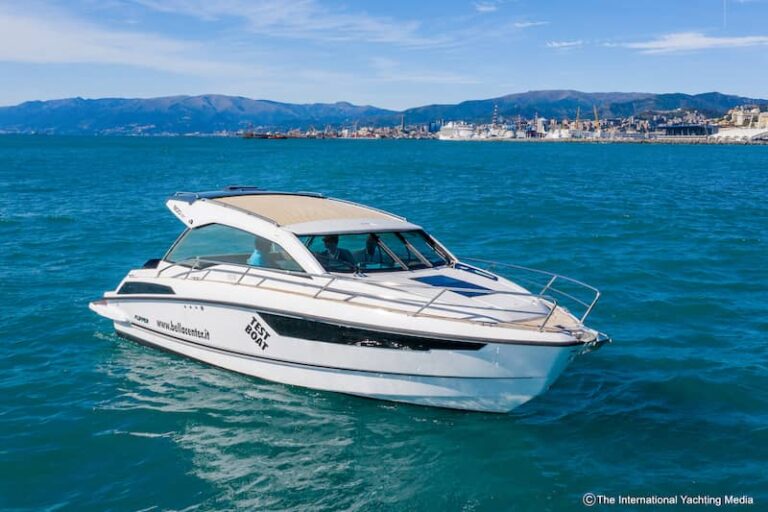
Despite the similarity of the name between the two models, the hulls are different and specially designed to deliver distinct behaviours and performance at sea. The shipyard, in fact, designs and builds different hulls for each model, paying particular attention to the optimization of weights, balance, comfort, usability, fuel efficiency and performance. The result is clearly perceivable when sailing. Seen from a distance, the Flipper 900 ST can be recognized by her rounded windowed deckhouse, completely open towards the stern, and her three-section windscreen: a sloppy glance might take it for other market products, but a more precise and in-depth view allows to discover what this boat is capable of. The observer can therefore discover that the solid teak that covers the deck, the side-decks, the gunwales, the stern staircases and platforms is offered as standard on all models; it is a precise of the manufacturer to make its own boats immediately recognizable.
Flipper 900 ST: Exteriors
The compact size of the Flipper 900 ST has not prevented the designers from creating a cockpit that, in terms of dimensions and furnishings, has nothing to envy to much larger boats.
The stern sundeck, wet bar, dining table and sofas are all comfortable and ergonomically well-designed. The teak table, equipped with glass holders and handrails, is electrically adjustable in height. When lowered, it turns into a large sundeck with cushions.
In both dining and sunbathing use, the backrest of the two co-pilot two-seat bench can be moved forward with a simple pantograph system in sturdy stainless steel. The wet bar is surprising: the top that covers it, blocked by a stopper, can slide rightward and unveil a sink and a cooking plate, thus functioning as a worktop if necessary; otherwise, it can be positioned vertically on the wall so as to keep the passage towards the stern clear.
As simple as smart, this solution allows to solve the usual space problems in the galley. Designers have, in fact, managed to create useful storage compartments everywhere: on the floor, under the sofas, in the pieces of furniture, in the platforms and even in the large stern garage (outboard propulsion translates into space-saving tanks and systems), thus offering many useful storage solutions.
A completely enclosed boat would not be particularly successful on the Italian market. This is why a generous portion of the roof can be opened to uncover almost the entire cockpit, from the windscreen to the stern sofa: furthermore, this solution allows to feel the wind in your face in the stand-up driving position.
The helm station is rather comfortable and ergonomic, both in the sitting and stand-up driving position, probably a little low compared with the height of the dashboard: it is probably sized to the standards of build of the Nordics.
The almost full-beam cockpit results into rather narrow side-decks, yet made safe by the abudant presence of handrails. The most comfortable access, however, is offered by the central section of the windscreen and the three steps (obviously covered with solid teak) integrated into the deckhouse structure.
The entire bow deck of the Flipper 900 ST is dedicated to the sundeck; during our test, the boat was devoid of cushions but this allowed us to better notice the large fixed windows and the wide opening manhole that flood the interiors with a considerable amount of air and natural light.
In the stern, the side-decks widen into an area occupied by a large chain locker which also hides an anchor windlass; the anchor (in this case a beautiful Ultra Marine stainless steel one) is placed in view in its bow; for safety and practicality purposes, the stainless steel rail is interrupted at the sides of the bow to allow easy passage to and from the ground.
Interiors
Given the compact size of the Flipper 900 ST – just 9 meters in length, as suggested by the name – the space available below deck is really surprising and cleverly arranged. Although the interior layout is similar to the only commonly found on this type of boats, it is the balance between elements that makes a difference. Firstly, it is unusual for the bow cabin to be closed by a door: this space is normally unique, at the expense of privacy.
What is a little sacrificed is the entrance, equipped with a couch, a wardrobe and access to the second aft cabin. Positioned under the cockpit, the master cabin is inevitably low in height but offers a really wide surface, hidden from the outside. Without forgetting a very important detail: the furniture and interior walls are all made of brushed solid teak obtained from unique slabs in order to obtain uniformity and continuity in the natural flames, a true luxury commonly found on superyachts.
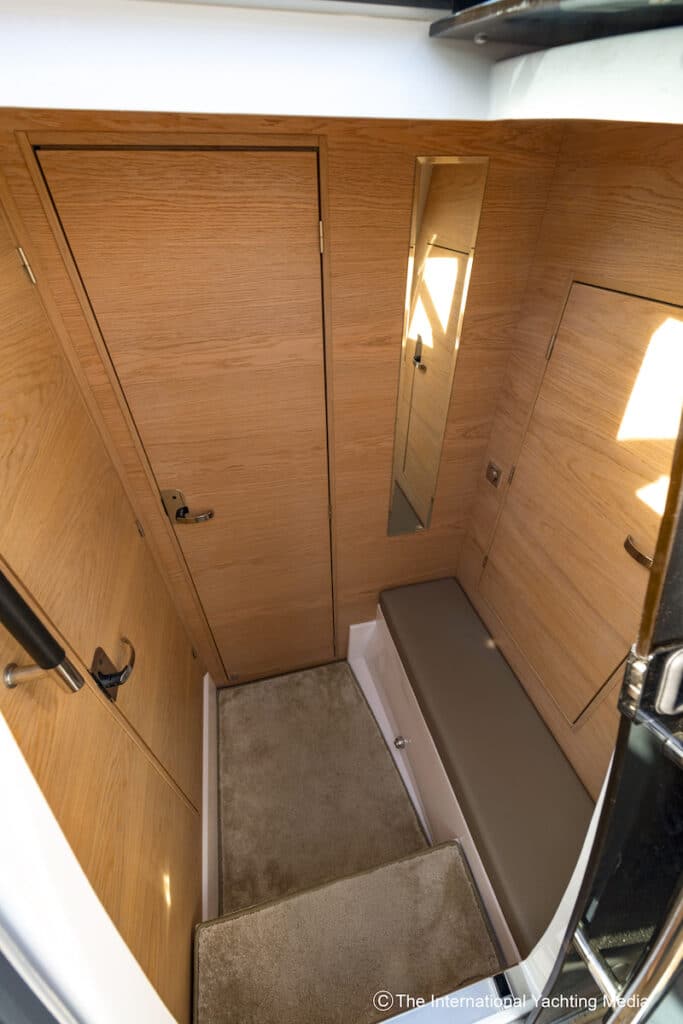
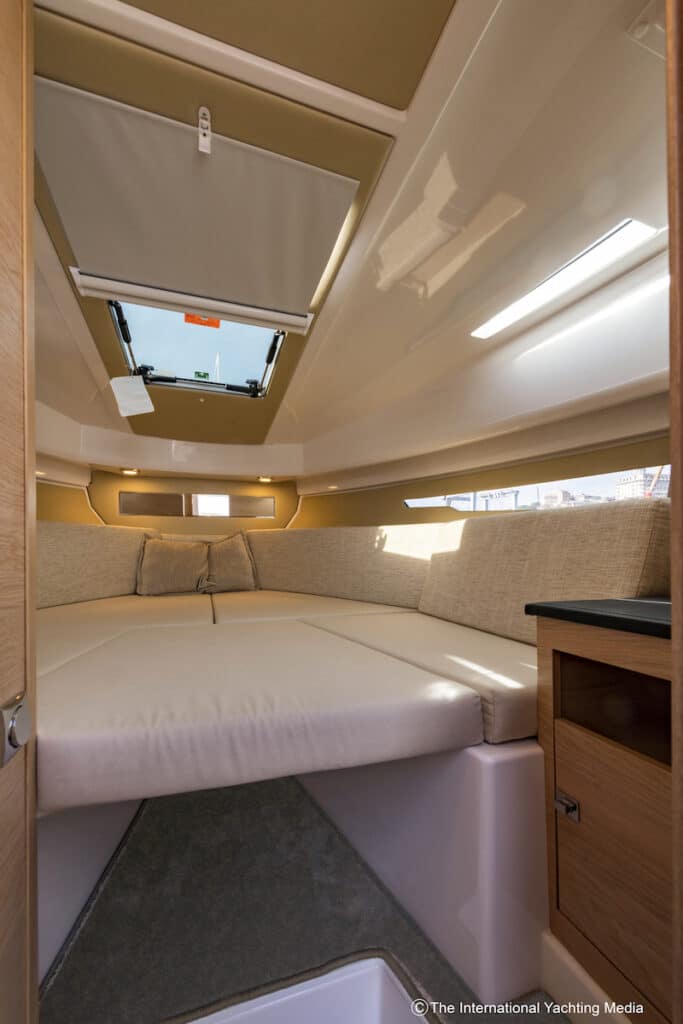
Flipper 900 ST: Sea Trial
We test the boat in Genoa on a nice sunny day. The sea is, however, rough and the waves progressively raise until they reach 2.5 meters in height. The Flipper 900 ST seems not be disturbed by this and, instead, shows a positive hebaviour. Quieter and less extreme than the 900 DC’s one, the hull still delivers exciting performance at high speed and great stability at cruising speed.
The tight turns performed in perfect circles of about 25 meters produce less pronounced roll angles than the 900 DC, but the feeling is always that of extreme handling and safety in every maneuver, even the most risky ones.
Cavitation and absent yaw also characterize the tighter turns, a sign that the hull lines are designed with seafaring attention. As for safety, as we have already mentioned above, the high sides and the presence of numerous handrails make life on board serene and protected.
The twin 200HP outboards are more than enough to deliver considerable performance, with a top speed of 38 knots and powerful acceleration. Resulting from a right installed power/waterlines and weight/mass distribution ratio, fuel consuption is rather low: at a cruising speed of 20 knots, the engines use less than 50 l/h.
In conclusion, the Flipper 900 ST, like her sister, has convided us completely. It is a really small yacht with extraordinary qualities.
| Test Conditions | |
| Wind | 15-20 knots |
| Sea | 2.5 m waves |
| Fuel | 300 l |
| Water | 0 |
| Passengers on board | 3 |
| Hull | dirty |
| Engines | 2 x Mercury XL DTS 200 HP |
| Rpm | Speed | l/h | l/nm | Range |
| 600 | 3 | 4.4 | 1.5 | 259.1 |
| 1000 | 5.1 | 7.4 | 1.5 | 261.9 |
| 1500 | 7 | 12 | 1.7 | 221.7 |
| 2000 | 8.4 | 19 | 2.3 | 168 |
| 2500 | 10.5 | 26.4 | 2.5 | 151.1 |
| 3000 | 15.3 | 36.6 | 2.4 | 158.9 |
| 3500 | 21.6 | 50.2 | 2.3 | 163.5 |
| 4000 | 26.9 | 68 | 2.5 | 150.3 |
| 4500 | 30 | 84 | 2.8 | 135.7 |
| 5000 | 35.1 | 120 | 3.4 | 111.2 |
| 5200 | 38.1 | 128.6 | 3.4 | 112.6 |
| Min. planing speed – trim 0 | 9.2 knots at 2,200 rpm |
| Min. planing sped – trim +26 | 8. knots at 2,150 rpm |

